Led by the Star of Beauty to the Love of Beauty Unseen
In Plato’s famous dialogue on love, the Symposium, Socrates relates the “tale” he learned from his teacher Diotima of Mantineia. She tells him that love is caused by the beautiful, and that the ultimate goal of our love is absolute Beauty itself:
He who has been instructed thus far in the things of love, and who has learned to see the beautiful in due order and succession, when he comes toward the end will suddenly perceive a nature of wondrous beauty (and this, Socrates, is the final cause of all our former toils)—a nature which in the first place is everlasting, not growing and decaying, or waxing and waning; secondly, not fair in one point of view and foul in another, or at one time or in one relation or at one place fair, at another time or in another relation or at another place foul, as if fair to some and foul to others… but beauty absolute, separate, simple, and everlasting, which without diminution and without increase, or any change, is imparted to the ever-growing and perishing beauties of all other things….
To put this in Christian terms (as the Church Fathers readily did), we may say that God is the absolute Beauty, of such a transcendent and spiritual order that our bodily senses and unilluminated intellect are not proportioned to grasp Him. We are—so says Aristotle—as blind as bats to the light of the sun, that is, what is most evident or true in itself. As Diotima says to Socrates:
And the true order of going, or being led by another, to the things of love, is to begin from the beauties of earth and mount upwards for the sake of that other beauty, using these as steps only, and from one going on to two, and from two to all fair forms, and from fair forms to fair practices, and from fair practices to fair notions, until from fair notions he arrives at the notion of absolute beauty, and at last knows what the essence of beauty is.
We must rise up to the contemplation of Him by small steps: by the beauty of the natural world, He has created and especially of human beings (His “first book”); by the beauty of Sacred Scripture (His “second book,” presupposing the first); and by the beauty of the sacred liturgy, which is the book of the Church, adorned with many beautiful creatures of the natural order (such as water, oil, fire, bread and wine, incense, wax, gold and silver, wood, marble, precious stones, silk, linen) and suffused with the beauties of divine revelation, through which these creatures are elevated into symbols of what is beyond them.
This book she opens for us day after day, to lead us by steps, gradually like the melismas of the Gradual chant, so that the eye of our soul may become adjusted over the course of our lifetime to the eternal glory for which we were created in Christ, “the most handsome of the sons of men” (Ps 45:2).
The solemn liturgy of Epiphany, a feast more ancient even than Christmas, speaks across the ages with the voice not only of divine revelation but of ancient wisdom at its highest point. We can hear echoes of Diotima in the Collect:
Deus, qui hodiérna die Unigénitum géntibus stella duce revelásti: concéde propítius; ut, qui jam te ex fide cognóvimus, usque ad contemplándam spéciem tuæ celsitúdinis perducámur. Per eumdem Dóminum nostrum Jésum Chrístum Fílium túum, qui vívit et régnat in unitate Spíritus Sáncti Déus per ómnia sæcula sæculorum. Amen.
O God, Who on this day by the leading of a star didst manifest Thine only-begotten Son to the Gentiles; mercifully grant that we who know Thee now by faith, may be brought even unto contemplating the beauty of Thine exalted majesty. Through the same Lord Jesus Christ Thy Son who liveth and reigneth with Thee in the unity of the Holy Ghost, God world without end. Amen.
By faith, we are initiated into the contemplation of the exalted majesty; but it is the beauty of the solemn liturgy that makes this journey plausible and in a way perceptible to our lowly human nature. The Mass, the Divine Office, the processions, the blessings, these things are like the star given to the Magi to lead them to the manger, where they met the Lord and worshiped Him face to face.
Without some tangible, visible, audible manifestation of the glory of God—even if we glimpse only God’s back (see Ex 33:18–23), the cloud of glory in which He dwells (Ex 40:34; 2 Chr 5:14; Ezek 10:4)—we are left in a trackless waste, without water, without light, without guidance, without prompting, without promise. We are left, in short, without a mediator to lead us from where we are to where we long to be.
This is the very logic of the Incarnation itself, as the Church sings in her ancient Christmastide Preface: “Quia per incarnati Verbi mysterium nova mentis nostrae oculis lux tuae claritatis infulsit: ut, dum visibiliter Deum cognoscimus, per hunc in invisibilium amorem rapiamur. “Through the mystery of the Word-made-flesh, a new radiance of Thy glory hath shone on the eye of the soul, such that, as we recognize God made visible, we are drawn to love of things invisible.”
Good Music, Sacred Music, and Silence: Three Gifts of God for Liturgy and for Life
Use coupon code BSA for 15% off TAN Books titles.
The same logic is at work in God’s detailed instructions to Moses on how the tabernacle is to be made, reflecting the heavenly pattern shown to him on the mountaintop; at work in every detail of Solomon’s Temple; at work in St. John’s vision of celestial worship in the heavenly Jerusalem; at work in the plan and construction of every traditional Catholic church. All these things are so many anticipations, extensions, and representations of the transcendent and inaccessible divine Word assuming human flesh of the Virgin Mary, setting up His tabernacle among us, making Himself our food and drink: God near us, God with us, God leading us to Himself.
If we understand this incarnational logic, we will understand once and for all why it is not merely unfortunate but unjust, irreligious, blasphemous, diabolic, to build ugly churches, to make ugly vestments and vessels, to make the liturgy itself homely, unsightly, banal, cacophonous, worldly—to depart foolishly and arrogantly from the great artistic traditions that the faith of the Church has developed to a perfection unequaled by any other culture known to man. As Diotima says: “the deformed is always inharmonious with the divine, and the beautiful harmonious.”
In the offertory of the authentic Roman Rite, the priest prays the latter half of Psalm 25 while he washes his hands. One verse has always left me full of wonder: Dómine, diléxi decórem dómus tuæ, et lócum habitatiónis glóriæ tuæ. “O Lord, I have loved the beauty of Thy house, and the place of the dwelling of Thy glory.” This silent phrase from the old Offertory captures the essence of the entire traditional liturgy, and points to precisely what is missing from the streamlined neo-liturgy of 1969.
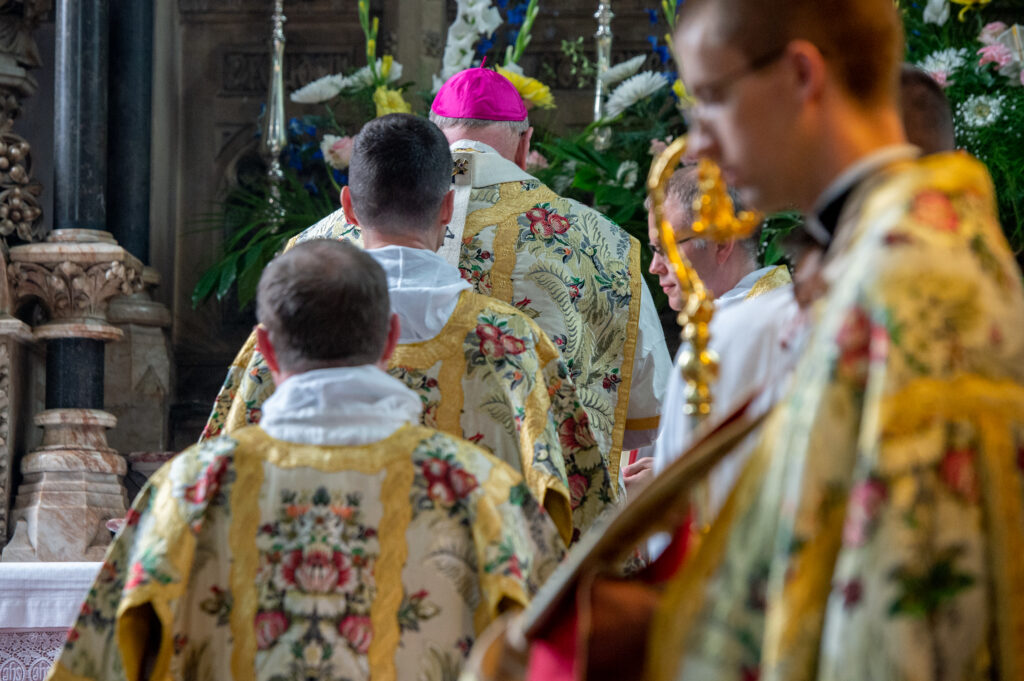
I have loved.
There is a deep passion or eros for God here, and a burning charity or agape. The traditional liturgy emerges from, expresses, and demands this eros and agape from its celebrant and congregation; it expresses this and nothing else, has no meaning apart from its supernatural orientation. The Novus Ordo, in contrast, was designed to be a humanly “relevant” ritual, easy to grasp in the vernacular, peppered with distractions, and divorced from theocentricity owing to its versus populum execution. Like the Pharisee who proclaims his self-esteem out loud, it already has its reward.
I have loved the beauty.
The immemorial liturgy makes ample room for beauty, cares about every detail of motion and object, urges on the greatest efforts of artists to ornament and illustrate and magnify its inexhaustible depth. The new rite has rarely done this and its users will rarely care enough to do it. In its moronic simplism and pandering populism, the Novus Ordo does not seem to call for beauty or prompt it or inspire it; the Novus Ordo is not a liturgy that looks to the heavenly paradigm on the mountaintop.
Use coupon code BSA for 15% off TAN Books titles.
I have loved the beauty of Thy house.
In any of the traditional liturgies of Christendom, we are entering into God’s temple and we know it; we are approaching Christ’s altar and we adore Him; we are engaged in the Father’s business and the world must wait outside. There is no question of its being a social gathering, a communal meal, a horizontal exercise, a closed circle. It focuses on the divine and the transcendent, into whose presence we are summoned in spite of our unworthiness, into whose house we are invited as poor beggars overwhelmed by the generosity of God.
And the place of the dwelling of Thy glory.
The teacher of Socrates spoke of “instruction in the things of love”; of “learning to see the beautiful in due order and succession,” of “mounting upwards for the sake of that other beauty.” The Magi, pagan sages, worshiped the one true God, of whom they had most likely heard from Israelite exiles; they were drawn by the gracious star, in due order and succession, to the threshold of God Incarnate; they mounted upwards in their hearts as they bowed their knees to the ground, offering to Him the most precious gifts of which they were capable: “the strength of the Gentiles” (Epistle of the Mass). For centuries after them, the richest wisdom and artistry of Athens, Jerusalem, and Rome was pressed into serving the same worship, at once humble and extravagant, of the “exalted Majesty” of God. For Him was prepared as fit a habitation as human minds and hands can make.
Quantum potes, tantum aude: Dare to do as much as you can. This is the spirit of all traditional rites, be they Eastern or Western. It is the spirit of the Catholic Church. It must become the driving force of our lives, leading us to the contemplation of “the beauty absolute, separate, simple, and everlasting” of the Most Holy Trinity, Father, Son, and Holy Ghost, who is God, now and always and forever and ever.
This article was originally posted in 2021.
Turned Around: Replying to Common Objections Against the Traditional Latin Mass
***Use coupon code BSA for 15% off TAN Books titles.
Love the Latin Mass & Tradition? You’ll Love These
Use coupon code BSA for 15% off TAN Books titles.
- Good Music, Sacred Music, and Silence: Three Gifts of God for Liturgy and for Life
- Reclaiming Our Roman Catholic Birthright: The Genius and Timeliness of the Traditional Latin Mass
- The Holy Bread of Eternal Life: Restoring Eucharistic Reverence in an Age of Impiety
- The Once and Future Roman Rite: Returning to the Traditional Latin Liturgy after Seventy Years of Exile (Dr. Peter Kwasniewski).
- Turned Around: Replying to Common Objections Against the Traditional Latin Mass
- Infiltration: The Plot to Destroy the Church from Within by Taylor Marshall
- The Merit of the Mass, by Fr Ripperger (article)
- The Asperges Rite in the Traditional Latin Mass (article)
How to Follow the Mass
- 1962 Roman Catholic Daily Missal (Angelus Press)
- Latin-English Booklet Missal For Praying The Traditional Mass

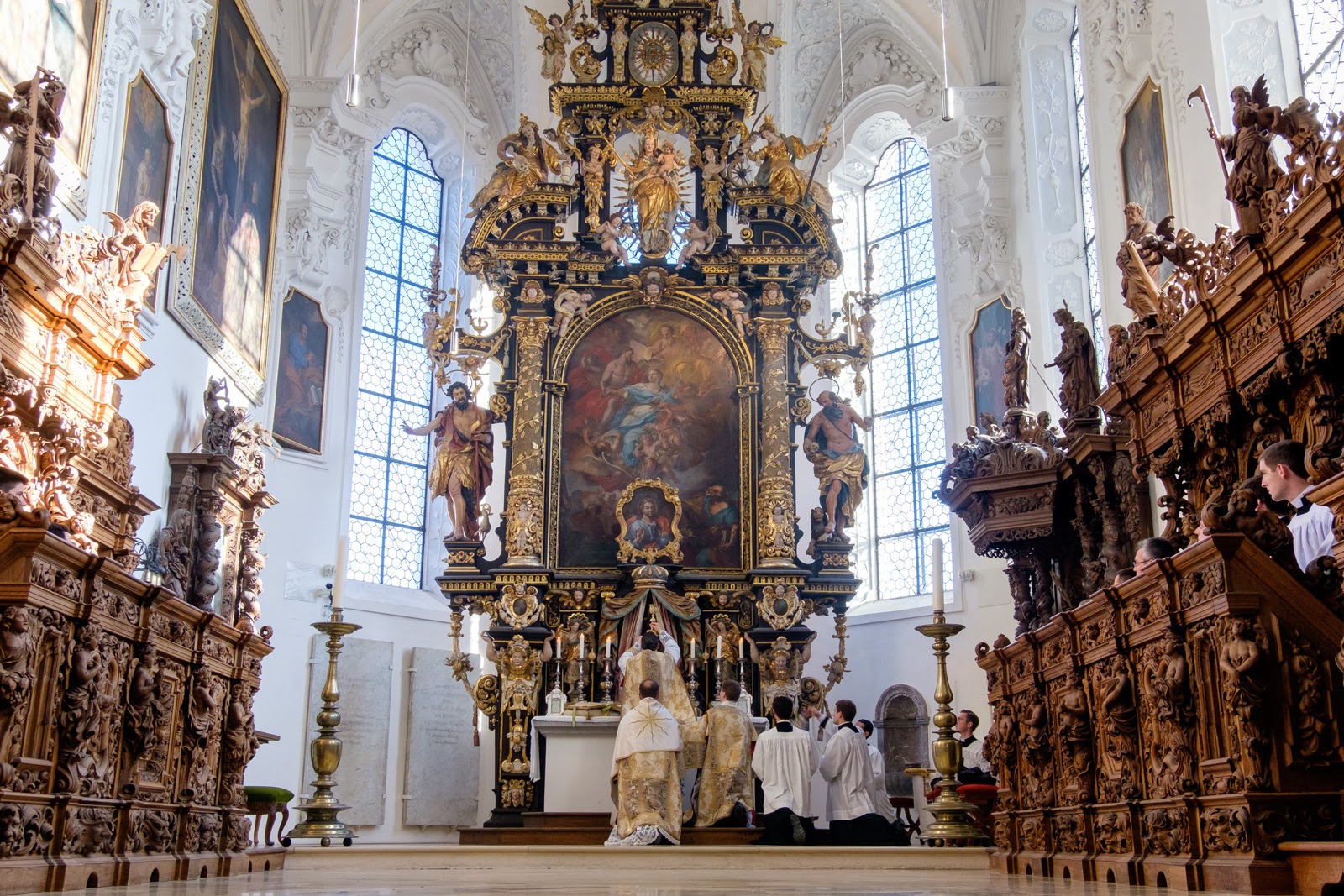



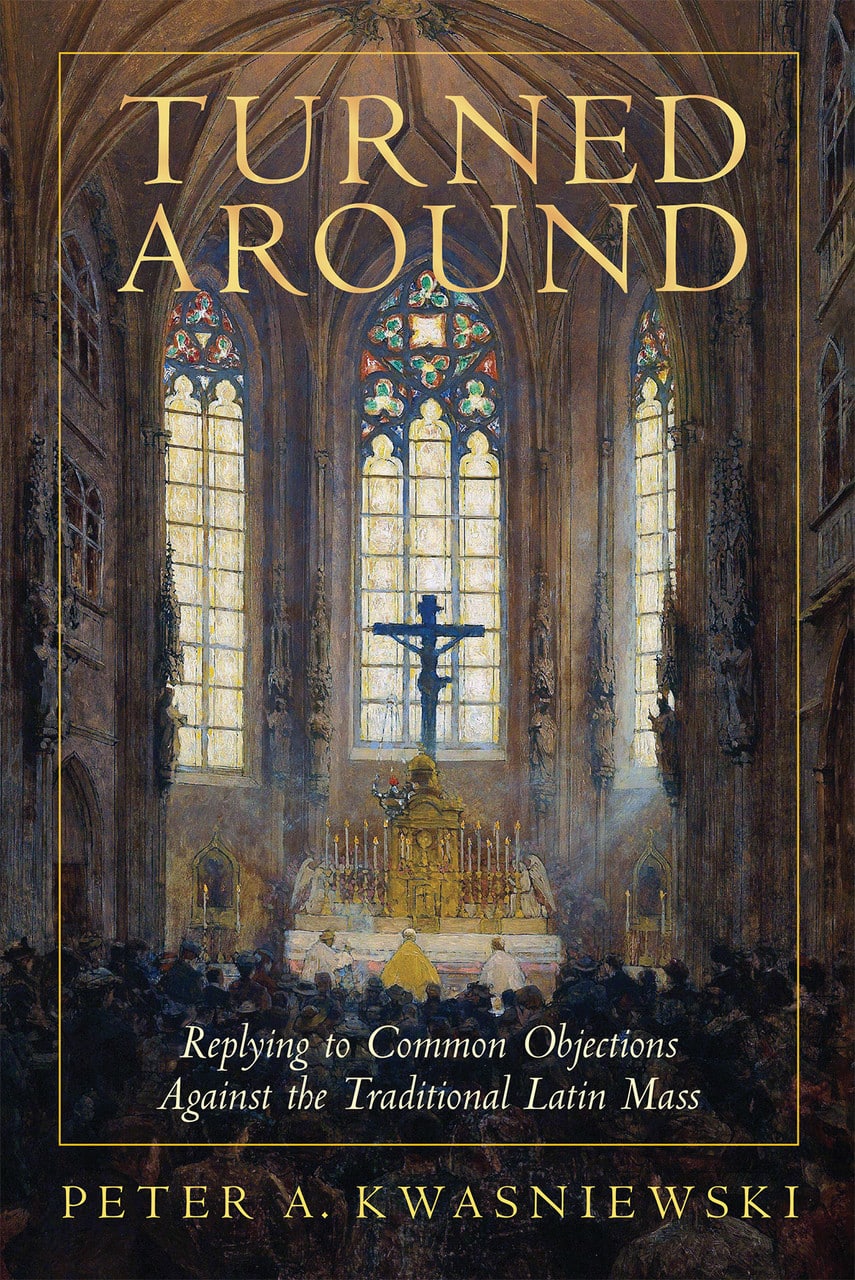


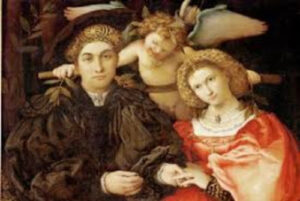


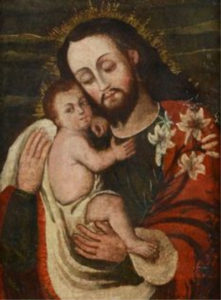

2 Comments